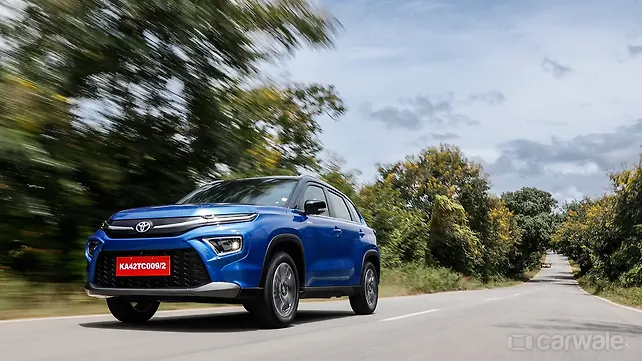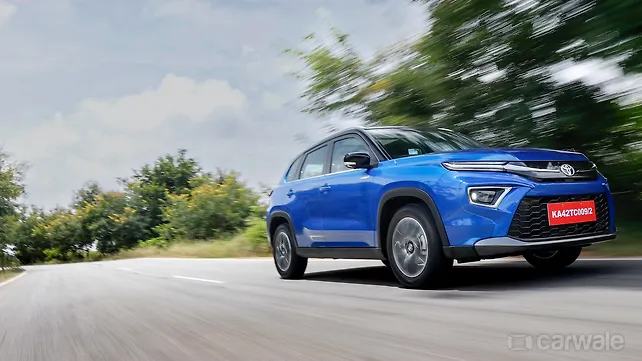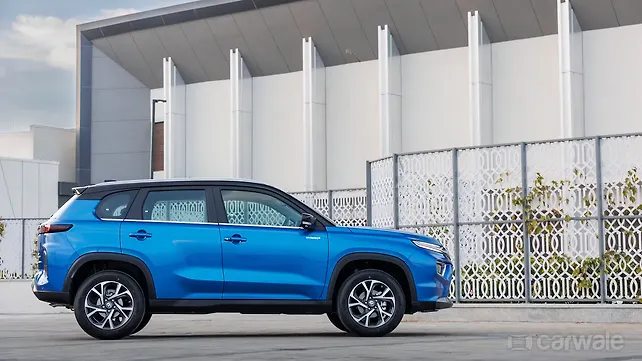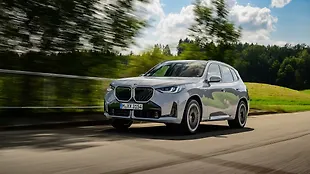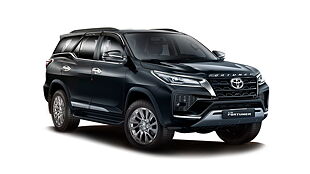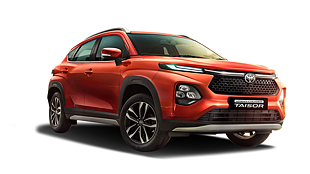Why would I buy it?
- First-in-segment, functional hybrid powertrain
- Higher fuel efficiency
- Good drivability and performance
Why would I avoid it?
- Headroom for second row isn’t great
- Quality of materials could have been better in some areas
- Compromised boot space
What is it?

Toyota is no stranger to hybridisation. They set the ball rolling for hybrid technology many years ago (remember the Prius?). Now, Toyota is aiming to bring the technology to the masses at an accessible price point. Its collaboration with Maruti Suzuki has opened avenues and after a couple of cross-badged products, here is the first properly co-developed offering from the alliance of the two giants – the Urban Cruiser Hyryder.

For those unaware, this isn’t just the new Urban Cruiser which is basically a rebadged Vitara Brezza. The Hyryder is bigger in size and takes the fight to the Hyundai Creta, Kia Seltos, and the new German pair – Taigun and Kushaq. And its co-developed brethren would be the reborn Maruti Grand Vitara. Meanwhile, the sub-four metre Urban Cruiser might continue (based on the new-gen Brezza), probably with a different name. But Toyota has not disclosed any details about it so far.

That said, let’s get back to the Hyryder and see what this new Toyota SUV has got going for itself.
What’s new inside and what’s on the feature list?

Sitting at 4,365x1,795x1,635mm, the Hyryder has an impressive road presence, but a tad more height would have helped its proportions to a great extent. Get inside and there’s a bright blue-coloured 'power' button welcoming you, aide-mémoire to its hybrid nature. As for the cabin design and layout, it’s simple and functional rather than stylish and flamboyant.

There are familiar elements seen all around the cabin, scrounged from the Maruti Suzuki’s parts bin. Some of them look just fine here, and a few of them, not very much. The steering wheel is nice and meaty and the floating touchscreen has a smooth response and is easy to operate, especially when driving.
But the plastics in some areas, like around the gear lever, look basic – especially for a car entering a highly competitive segment. Thankfully there are soft-touch materials on the dashboard and on the door pads done in rich brown. And the smartly-designed cascading dash has space to place your smartphone with a wireless charger at its base.

Talking about the front seats, they are large and comfortable. Even the visibility all around isn’t too bad. At the back, although it’s easy to get in, the headroom is limited. This is owing to the hybrid powertrain’s battery placed underneath, so the compromise is with the headroom, especially for taller passengers, above 5.8ft. Another trade-off for the battery placement is the reduced boot space.

We could cram in two cabin-size suitcases with room to spare for a couple of duffle bags. Meanwhile, the base of the second-row bench is easily detachable to access the battery connectors. Then, the under-thigh support is good and even the legroom is more than sufficient. But sitting three here would only be comfortable for shorter trips.

Looking at the feature list of this range-topping Hybrid-V trim, there’s everything you’d expect from this segment. You get an LED for projector, DRLs and tail lamps, 17-inch dual-tone wheels, and a panoramic sunroof. On the inside, there’s a nine-inch touchscreen with wireless smartphone connectivity, cooled front seats, auto AC, Arkamys sound system, ambient lighting, cruise control, air purifier, auto headlamps, wireless charger, a 360-degree camera, heads-up display (HUD), and an auto-dimming IRVM. We like the all-digital instrument cluster for its design and for giving out all the information you’d need. Toyota i-Connect also provides modern-day connected car tech. In terms of safety, it comes with six airbags, disc brakes for rear wheels, ABS with EBD, TPMS, rear sensors, three-pointed seat belts for all passengers, and hill assist.
What’s it like to drive?

Part of the collaboration between Toyota and Maruti Suzuki was the sharing of hybrid technology and we get the first taste of it in the Hyryder. The engine here is a 1.5-litre NA three-cylinder which has done duty in many Toyota models internationally. It produces 91bhp and 122Nm. Paired to the engine is a 59kW (around 80bhp)/141Nm electric motor fed through a lithium-ion battery pack. The total system output is 115bhp. And when cranking up, the system would start in EV mode, always.

Then, the switch between the electric motor and petrol engine is decided by an electronic brain. This usually happens when the battery percentage (which is not indicated) drops, or there’s more load on the system. There’s also a power flow indicator on the infotainment/MID/HUD, like you get in any other strong hybrid. When the engine comes into play, it isn’t vibey despite being a three-cylinder. Now, since it kicks in after the silent EV mode, it feels relatively noisier than it actually is. It does get vocal when pushed hard though. Plus, the CVT automatic it’s paired to also works fine under everyday driving conditions. And when slowing down, the regen system starts charging the battery immediately.

In the EV mode, the Hyryder glides around town effortlessly. There’s a good amount of grunt from the motor to keep pace with the traffic and carry around the Hyryder’s relatively higher gross weight of almost 1.8tonne with ease (we drove with four people and their luggage on board). For highway speeds on lighter throttles, descending those odd crests or flyovers, or simply cruising around, the powertrain would switch to EV mode – even doing close to triple-digit speeds. Although it can effortlessly cruise at highway speeds all day, the system starts to feel sluggish when pushed beyond triple-digit speeds.

Further, there are three drive modes – Normal, Eco and Power – but the change in the throttle response for these modes is barely noticeable. Moreover, there’s a B mode on the gear lever after the D, which increases the brake energy recuperation but only marginally. This, in turn, helps charge the battery faster and reduces the usage of a petrol engine for most driving conditions, thus saving fuel. Talking about fuel economy, the claimed figure is 27.97kmpl.

We liked how the Hyryder’s ride quality remains supple and comfortable over most of the surfaces we encountered. It absorbed bad road surfaces with good poise. Large speed breakers or cobbled surfaces, the Hyryder managed to round them off nonchalantly. Even at highway speeds, the undulations and sudden sharp potholes or road joints are taken astride with good dexterity. It can comfortably hold highway speeds all day and doesn’t feel unsettled under hard braking either. Going two-and-a-half turns lock-to-lock, the steering has a good weight to it and is quick to respond. It also weighs up nicely at highway speeds. There’s some body movement when thrown around a bit, but again it’s not meant for attacking corners. At the end of the day, the Hyryder’s isn’t very sporty, but neither is boring for everyday driving.

How does it compare and what’s the price?

Toyota is yet to launch the Urban Cruiser Hyryder. When it does go on sale, the Hyryder needs to have a competitive price bracket to gain ground in the segment. And that can be achieved by high localisation of the hybrid powertrain, which won’t be difficult as the hybrid powertrain (except the battery) is now built at Toyota’s Bidadi facility. And parts sharing with Maruti Suzuki would further help the cause.

With the Hyryder, the Japanese carmaker aims of bringing hybridisation to the masses while grabbing a share of the lucrative C-SUV space. What the Hyryder has got going for itself is it being the segment’s first hybrid, thus higher fuel efficiency, decently decked up feature list, vast service network, and the competitive pricing Toyota is aiming for. As for ousting the segment leaders, it indeed will be an uphill task from here.
Pictures by Kapil Angane



